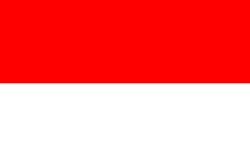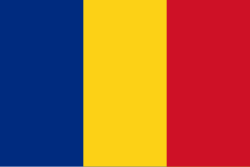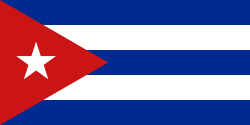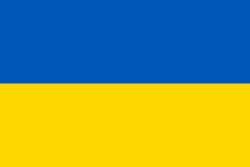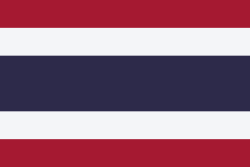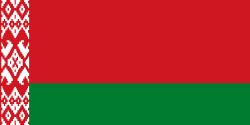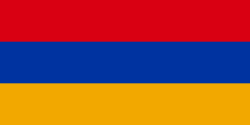Vægtløftning under sommer-OL 2012
| Vægtløftning under sommer-OL 2012 | ||
|---|---|---|
 | ||
| Mænd | Kvinder | |
| 56 kg | 48 kg | |
| 62 kg | 53 kg | |
| 69 kg | 58 kg | |
| 77 kg | 63 kg | |
| 85 kg | 69 kg | |
| 94 kg | 75 kg | |
| 105 kg | +75 kg | |
| +105 kg | ||
Vægtløfting under sommer-OL 2012 er var en konkurrence under Sommer-OL i London. Det var 24. gang at vægtløfting var på det olympiske programmet siden disciplinen blev introduceret som officiel øvelse under Sommer-OL 1896. Der blev konkurreret om femten olympiske titler i otte forskellige vægtklasser for mænd og kvinder i perioden 28. juli til 7. august. Alle konkurrencerne blev afholdt i ExCeL.
Program
| Mænd | Kvinder | ||
|---|---|---|---|
| Klasse | Dato | Klasse | Dato |
| 56 kg | 29. juli | 48 kg | 28. juli |
| 62 kg | 30. juli | 53 kg | 29. juli |
| 69 kg | 31. juli | 58 kg | 30. juli |
| 77 kg | 1. august | 63 kg | 31. juli |
| 85 kg | 3. august | 69 kg | 1. august |
| 94 kg | 4. august | 75 kg | 3. august |
| 105 kg | 6. august | over 75 kg | 5. august |
| over 105 kg | 7. august | ||
Resultater
Mænd
| Klasse | Guld | Sølv | Bronze |
|---|---|---|---|
| 56 kg | Om Yun-Chol | Wu Jingbiao | Valentin Hristov |
| 62 kg | Kim Un-Guk | Óscar Figueroa | Eko Yuli Irawan |
| 69 kg | Lin Qingfeng | Triyatno | Răzvan Martin |
| 77 kg | Lu Xiaojun | Lu Haojie | Iván Cambar |
| 85 kg | Adrian Zieliński | Apti Aukhadov | Kianoush Rostami |
| 94 kg | Ilya Ilyin | Aleksandr Ivanov | Anatolie Cîrîcu |
| 105 kg | Oleksiy Torokhtiy | Navab Nassirshalal | Bartłomiej Bonk |
| +105 kg | Behdad Salimi | Sajjad Anoushiravani | Ruslan Albegov |
Kvinder
| Klasse: | Guld: | Sølv: | Bronze: |
| 48 kg | |||
| 53 kg | |||
| 58 kg | |||
| 63 kg | |||
| 69 kg | |||
| 75 kg | |||
| +75 kg | Zhou Lulu | Tatiana Kashirina | Hripsime Khurshudyan |
| ||||||||
Koordinater: 51°30′27″N 0°01′47″Ø / 51.5075°N 0.02972°Ø
Medier brugt på denne side
bendera Indonesia
Flag of Iran. The tricolor flag was introduced in 1906, but after the Islamic Revolution of 1979 the Arabic words 'Allahu akbar' ('God is great'), written in the Kufic script of the Qur'an and repeated 22 times, were added to the red and green strips where they border the white central strip and in the middle is the emblem of Iran (which is a stylized Persian alphabet of the Arabic word Allah ("God")).
The official ISIRI standard (translation at FotW) gives two slightly different methods of construction for the flag: a compass-and-straightedge construction used for File:Flag of Iran (official).svg, and a "simplified" construction sheet with rational numbers used for this file.
Chinese Taipei Olympic Flag. According to the official website of Chinese Taipei Olympic Committee, Blue Sky(circle) & White Sun(triangles) above the Olympic rings is neither the National Emblem of the Republic of China, nor the Party Emblem of Kuomintang (KMT), but a design in between, where the triangles do not extend to the edge of the blue circle, as registered at International Olympic Committee in 1981 and digitally rendered in 2013. Besides, the blue outline of the five-petaled plum blossom is broader than the red one. Moreover, the CMYK code of the blue one and the Blue Sky & White Sun is "C100-M100-Y0-K0", and different from the Olympic rings (C100-M25-Y0-K0). Note that it's the only version recognized by IOC.
The national flag of Kingdom of Thailand; there are total of 3 colours:
- Red represents the blood spilt to protect Thailand’s independence and often more simply described as representing the nation.
- White represents the religion of Buddhism, the predominant religion of the nation
- Blue represents the monarchy of the nation, which is recognised as the centre of Thai hearts.
Flag of Canada introduced in 1965, using Pantone colors. This design replaced the Canadian Red Ensign design.
Olympic Rings without "rims" (gaps between the rings), As used, eg. in the logos of the 2008 and 2016 Olympics. The colour scheme applied here was specified in 2023 guidelines.
Olympic Rings without "rims" (gaps between the rings), As used, eg. in the logos of the 2008 and 2016 Olympics. The colour scheme applied here was specified in 2023 guidelines.
Forfatter/Opretter: Senseiich, Licens: CC BY-SA 3.0
That's how main entrance to Excel looked like in 2011
Pictograms of Olympic sports - Weightlifting. This is unofficial sample picture. Images of official Olympic pictograms for 1948 Summer Olympics and all Summer Olympics since 1964 can be found in corresponding Official Reports.





